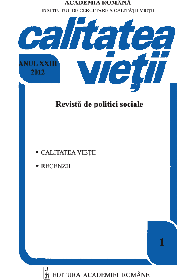Oferta turistică din România: 1948–2010
The touristic offer of Romania during the period 1948–2010
Author(s): Manuela Sofia Stănculescu, Dan Constantin RădulescuSubject(s): Social Sciences
Published by: Editura Academiei Române
Keywords: tourism; tourism supply indicators of tourism; policies in tourism
Summary/Abstract: This study presents an empirical research that examines the key-developments in tourism in Romania, during two historical phases: 1948–1989 and 1990–2010. Based on a desk research, time series for the last 63 years were reconstructed for the main indicators of tourist capacity and its effective use, but also for some indicators related to tourism demand and tourism business results. Most data come from the official statistics in tourism provided by the National Institute for Statistics. For a comprehensive approach, the major policies, legislation and institutional arrangements that have influenced the development and operation of tourism in the two historical periods are described. This article focuses on tourism understood as a social, cultural and economic phenomenon, related to the movement of people outside their usual place of residence. Thus, tourism is considered here in line with the definition adopted at the UN Conference on Tourism and International Travel (Rome, 1963), as completed at the International Conference on Travel and Tourism Statistics in Ottawa (Canada, 1991), which has been implemented by Eurostat at the European level since 2004: “tourism means the activities of persons travelling to and staying in places outside their usual environment for not more than one consecutive year for leisure, business and other purposes” (Eurostat, 2011). The study focuses on the domestic tourism, which ‘comprises the activities of residents of a given country travelling to and staying in places only within that country but outside their usual environment’ (Eurostat, 2011). Tourism is most often considered as a demand side subject referring to the activities of visitors. Nonetheless, in this paper, tourism is mainly viewed from the supply side and in this respect it is understood as the set of productive activities which provide services to visitors. Due to the sharp differences between the two historical phases between 1948 and 2010 the analysis is organized in two sections. The first section refers to the main developments of tourism during the communism era (1948–1989), while the second section reflects the transformations and trends that have occured in the postcommunist period (1990–2010). During the period 1948–1976, a centralized legislative institutional framework was developed, with effects in the tourism sector until 1989. A national network of state-owned tourist facilities was established, especially after 1955–1965. The legislative and institutional changes as well as major investments produced a number of positive effects: the tourist supply was expanded, diversified and modernized, the number of accommodation units, tourist capacity, number of employees in tourism, tourist traffic as well as the volume of tourism receipts increased considerably. Despite the crisis that struck the Romanian economy after 1975–1980, the tourism sector continued to register positive developments both in terms of increasing functional capabilities a
Journal: Calitatea vieţii
- Issue Year: XXIII/2012
- Issue No: 4
- Page Range: 299-326
- Page Count: 28
- Language: Romanian

